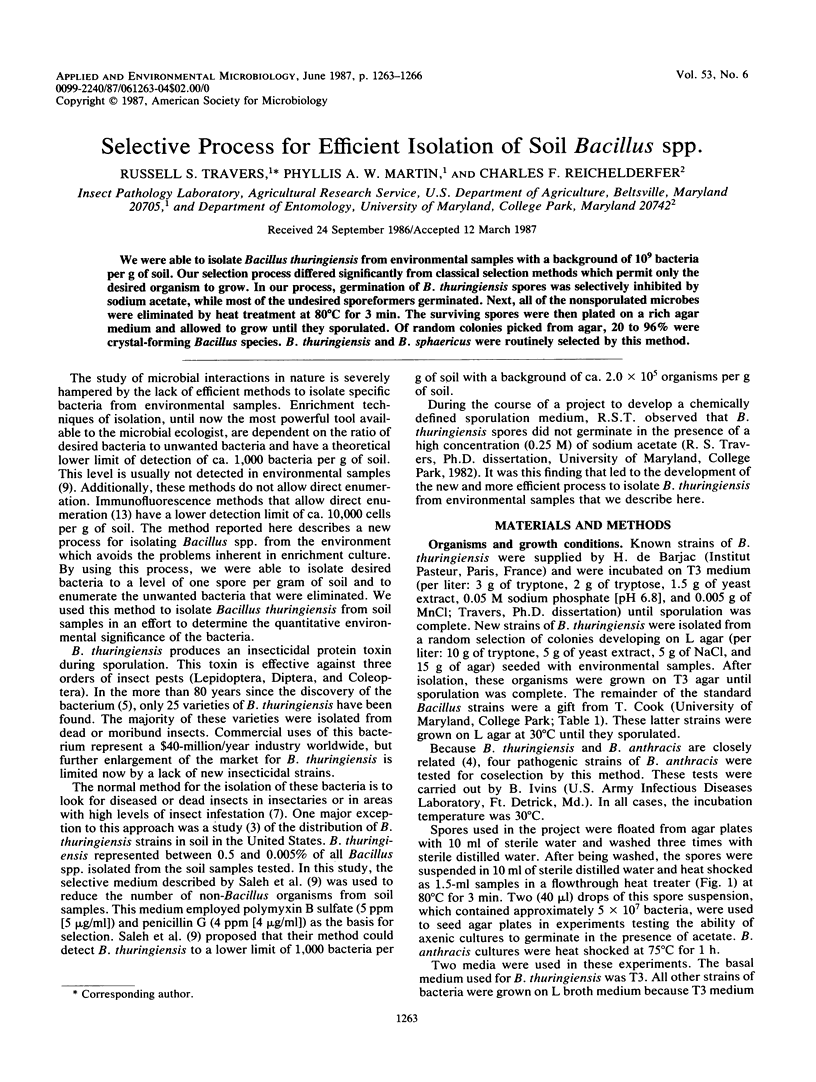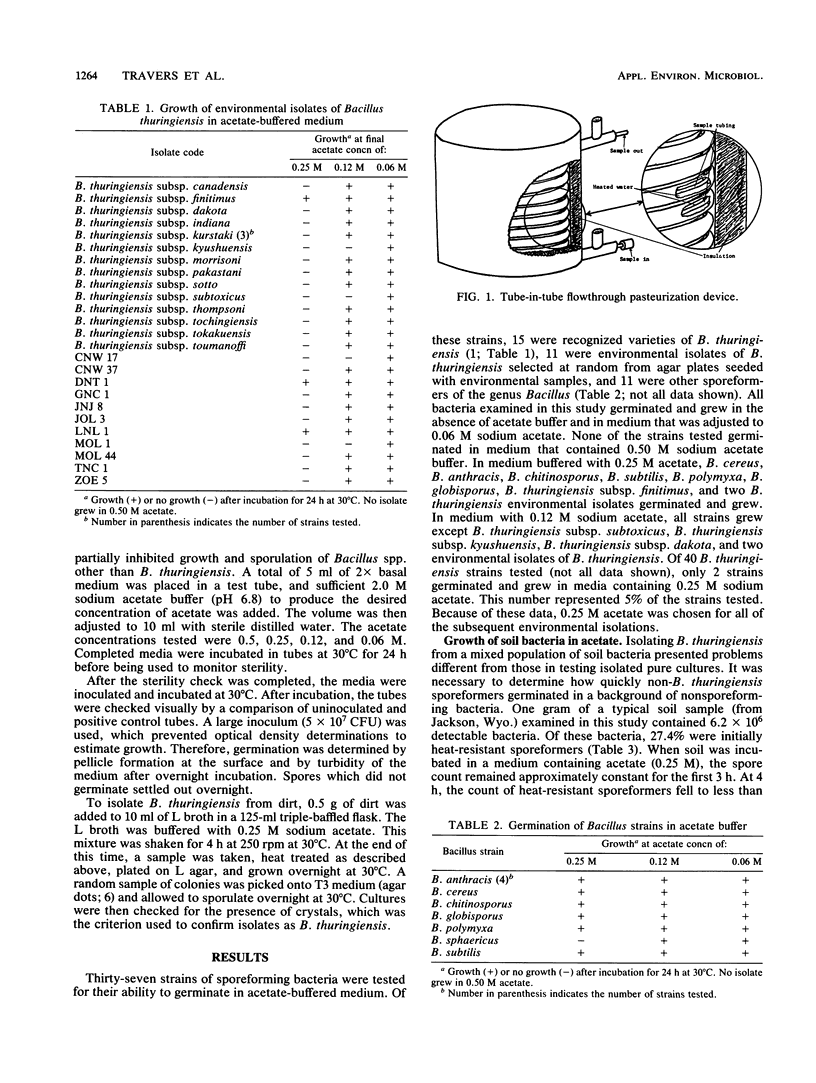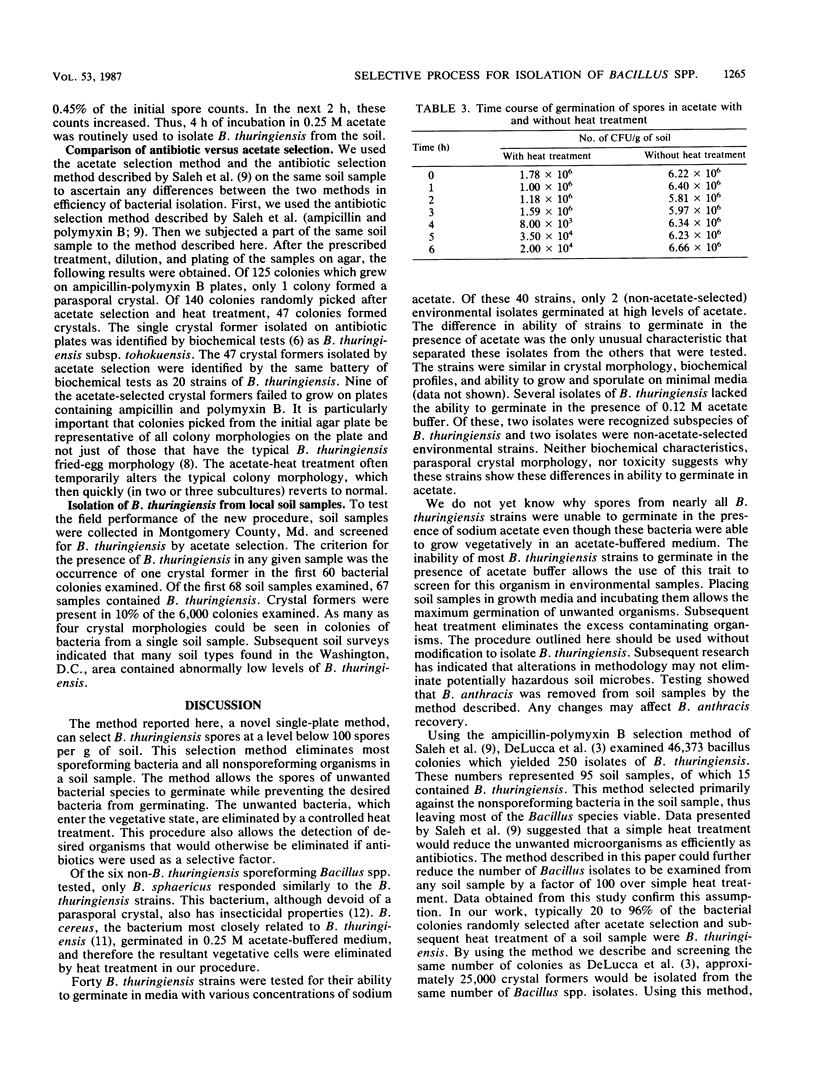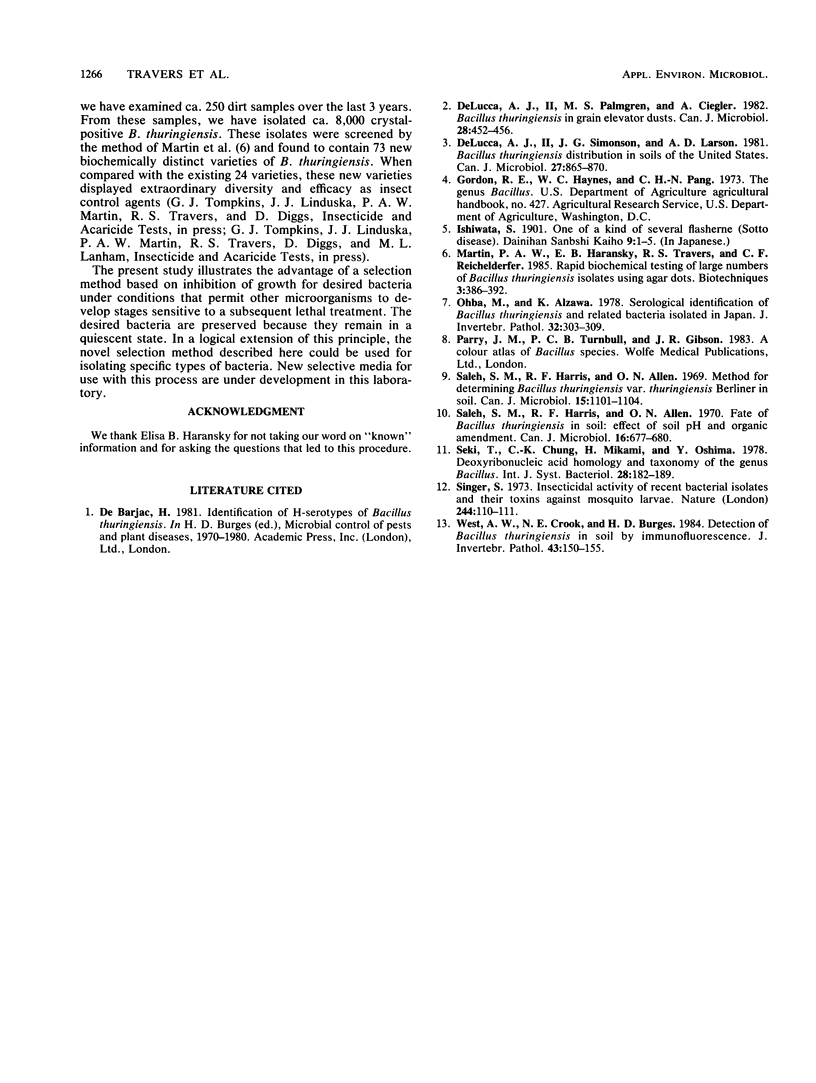Abstract
We were able to isolate Bacillus thuringiensis from environmental samples with a background of 109 bacteria per g of soil. Our selection process differed significantly from classical selection methods which permit only the desired organism to grow. In our process, germination of B. thuringiensis spores was selectively inhibited by sodium acetate, while most of the undesired sporeformers germinated. Next, all of the nonsporulated microbes were eliminated by heat treatment at 80°C for 3 min. The surviving spores were then plated on a rich agar medium and allowed to grow until they sporulated. Of random colonies picked from agar, 20 to 96% were crystal-forming Bacillus species. B. thuringiensis and B. sphaericus were routinely selected by this method.
Full text
PDF



Selected References
These references are in PubMed. This may not be the complete list of references from this article.
- DeLucca A. J., 2nd, Simonson J. G., Larson A. D. Bacillus thuringiensis distribution in soils of the United States. Can J Microbiol. 1981 Sep;27(9):865–870. doi: 10.1139/m81-137. [DOI] [PubMed] [Google Scholar]
- Saleh S. M., Harris R. F., Allen O. N. Fate of Bacillus thuringiensis in soil: effect of soil pH and organic amendment. Can J Microbiol. 1970 Aug;16(8):677–680. doi: 10.1139/m70-116. [DOI] [PubMed] [Google Scholar]
- Saleh S. M., Harris R. F., Allen O. N. Method for determining Bacillus thuringiensis var. thuringiensis Berliner in soil. Can J Microbiol. 1969 Sep;15(9):1101–1104. doi: 10.1139/m69-195. [DOI] [PubMed] [Google Scholar]
- Singer S. Insecticidal activity of recent bacterial isolates and their toxins against mosquito larvae. Nature. 1973 Jul 13;244(5411):110–111. doi: 10.1038/244110a0. [DOI] [PubMed] [Google Scholar]


